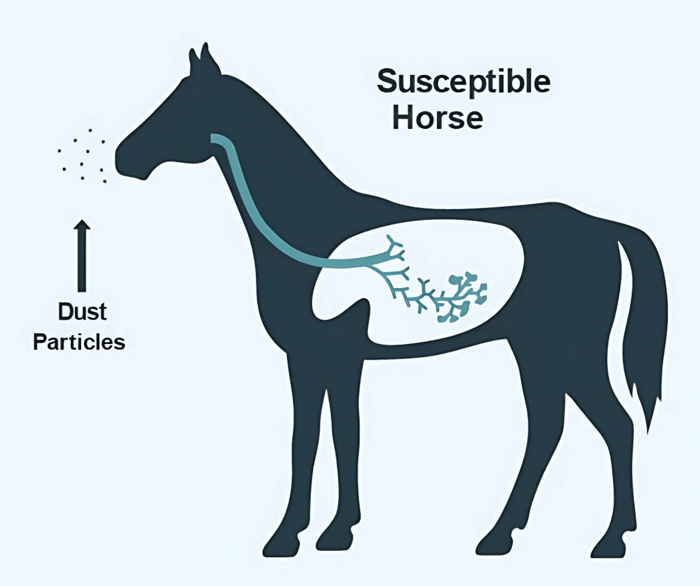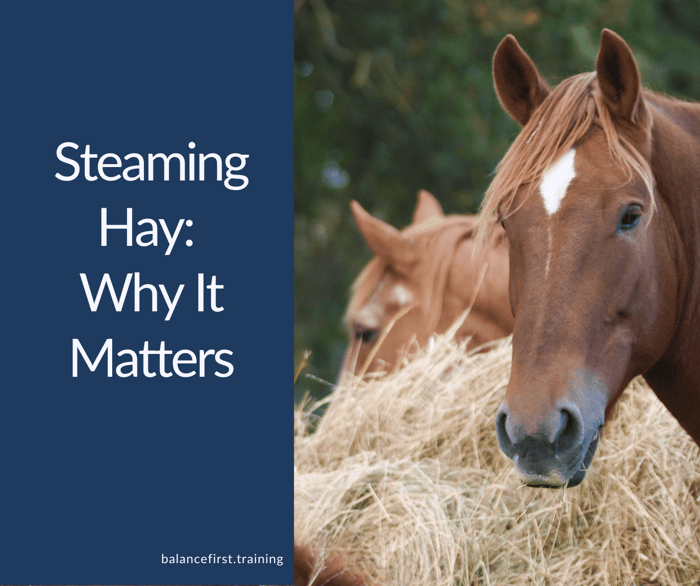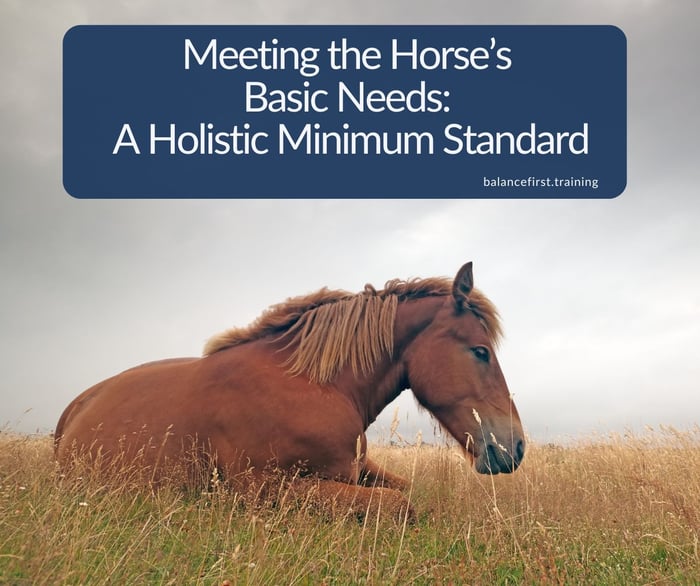Table of Contents
Steaming Hay: Why It Matters.
Dry forage and respiratory health
Does your horse cough after eating hay? You’re not alone. Many owners don’t realize that dry hay can quietly compromise respiratory health.
Dry hay and straw contain dust and spores, and other fine particles. As they are eating, the particles travel up the horse's nose and cause irritation to the airways and lungs.
When inhaled, these fine particles can irritate the sensitive lining of the horse’s airways, leading to chronic inflammation, coughing, and in some cases, Recurrent Airway Obstruction (RAO), also known as heaves.
The tiny dust particles and mould spores can cause reduced lung function and respiratory diseases, similar to asthma in humans.

Try for yourself. Take a slice of your hay, press your face into it, and breathe in deeply. Notice how it affects your airways, and also notice the dust particles in your mouth.

Steaming hay
Hay steaming involves heating hay with moist heat to reduce airborne particles, kill mold spores, and improve palatability, without leaching nutrients like soaking does.
After switching to steamed hay, I noticed my pony’s coughing had reduced significantly within days. It was a simple change with a big impact.
When Is Hay Steaming Most Beneficial?
Steaming hay is especially helpful in:
- Dusty barns or indoor stabling with poor airflow
- Winter months, when ventilation is limited
- Horses with respiratory sensitivities, like coughing or RAO
- Older horses or those recovering from illness
- High-density yards, where airborne irritants are common
💡 Tip: Even healthy horses benefit from cleaner forage. Steaming is a proactive way to support lung health and comfort before symptoms appear.

Steaming vs. Soaking Hay: What’s the Difference?
Steaming
✅ Uses moist heat to kill mold spores and reduce dust
✅ Preserves nutrients better than soaking
✅ Improves palatability for picky eaters
✅ Reduces respiratory irritants without waterlogging
Soaking
✅ Can lower sugar content (NSCs) for laminitis-prone horses
❌ Leaches nutrients and minerals
❌ Creates heavy, wet hay that may spoil quickly
❌ Messy and labor-intensive
❌ Doesn’t eliminate all airborne particles
💡 Tip: Use steaming for respiratory health and soaking for metabolic management. Each has its place when used intentionally.

Our experience
Steaming hay consistently has been a game-changer for us. I tried a lot of different methods, but in the end, I opted to spend the money and get a really good steamer. It has been well worth it.
On the occasions that I do happen to mess up and feed them hay dry, depending on the hay, Dylan will start coughing or get a runny nose, almost immediately. It can be quite distressing for both of us.
When I am consistent in feeding steamed hay, they rarely cough at all, including during exercise.
 Dylan with his steamer (note it's best not to let them feed direct from the steamer).
Dylan with his steamer (note it's best not to let them feed direct from the steamer).
Important
If your horse has a high temperature, difficulty breathing, is choking, or is generally weak and not his normal self, or has other abnormal symptoms, it's important to call the vet straight away. - If you are feeding dry hay and your horse is not coughing, it does not mean you don't have a problem. Your horse may not be coughing now, but you are building up a problem for the future.
- If your hay is very old and dusty, no amount of steaming or soaking will help. Old hay is not necessarily lower in energy, and is generally pretty unpleasant. Ditch it and get some decent forage, for your horse's sake.

Sanitizing against the nasties
The heat generated during steaming also has a sanitizing effect. Think about all the nasties that can get into hay when it's being made and stored, like:
- Faeces and urine of rodents and other animals
- Dead animals or bones (especially where sheep have grazed the field)
- Bird feathers, sheep fleece
- Pollutants and rubbish, particularly if the hay was grown near a road.
Get the best steamer you can afford
There are some excellent steamers available on the market now, and a good-quality one is well worth the investment.
Heating the water to create the steam has an additional cost for electricity, which should be taken into account.
I'd love to hear your thoughts and experiences in the comments below.
FAQs
What if you can't afford a steamer right now?
A cheap alternative is to fill a large bin with hay and pour boiling water on it. This works, but is not as effective as a good-quality, well-designed steamer. I would also caution against this because of the safety concerns of carrying a kettle of boiling water. A better alternative could be to use a paint-stripping machine connected to a bin.
What if you are not able to set up a steamer?
If it's impossible to steam, try good-quality wrapped hay or haylage. Alternatively, you could wet or dip your hay in water, or soak it, but this can wash out the vitamins and minerals, cause bacteria and mould growth (risking colic or other illnesses), and be difficult if you have more than one horse.
What if you stop feeding dry hay, but nothing changes?
Depending on your individual horse, it can take time to see a change, so stick with it. Also, look for other potential causes like dusty bedding or a lack of ventilation. Change from straw bedding to something dust-free, like shavings or wood pellets. But either way, steaming/wetting is a no-brainer if the horse is coughing. Call the vet if you are worried.
What else can cause a horse to cough?
Coughing and/or nasal discharge can be a symptom of severe inflammation, a virus, or a bacterial infection that needs vet treatment. If in doubt, get advice from your vet.
My horse starts coughing as soon as we start trotting. It clears after a few moments. Should I be worried?
This is common, but it is not normal, and it is a sign that your horse is being exposed to dust particles that are irritating his airways. Help your horse by steaming his hay or changing to haylage or wrapped hay. Also, avoid using dusty bedding like straw.
Does steaming hay remove nutrients?
No. Unlike soaking, steaming preserves most nutrients while reducing harmful particles.
Is steaming hay worth the cost?
For horses with respiratory issues or in dusty environments, it can significantly improve comfort and long-term health.


.JPG)


